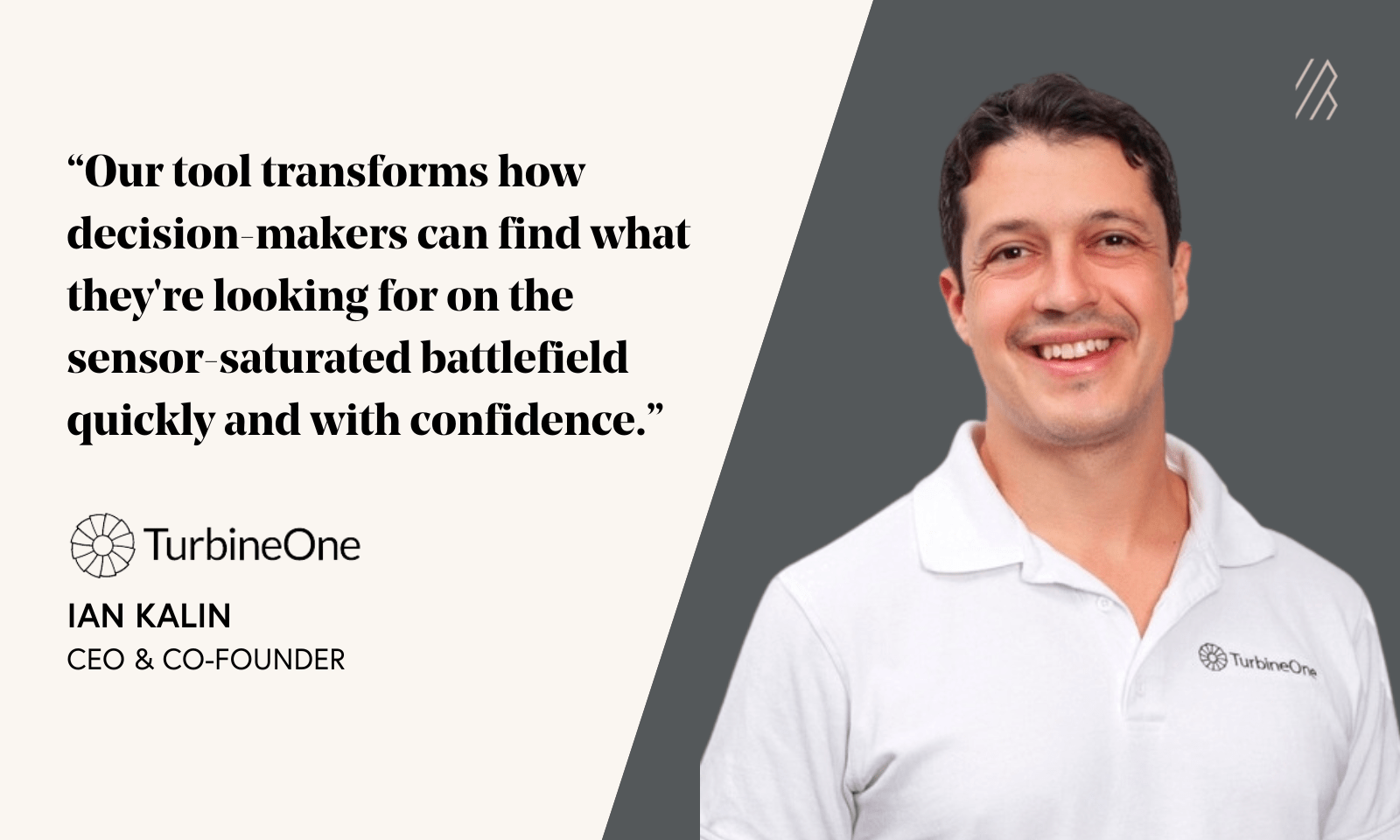TurbineOne: On a mission to modernize the military’s processing and exploitation capabilities into a holistic and efficient system
Bessemer Venture Partners leads TurbineOne’s $15 million Series A to empower military analysts at the frontlines
Processing data and building AI models in a timely and accurate manner is key to decision advantage within national security use cases — it can make or break the success of a mission. Every millisecond matters. With new threats mounting to the defense community, the need to modernize and integrate processing and exploitation capabilities into a holistic and efficient system is more pertinent than ever before.
Across the National Intelligence Program and Military Intelligence Program, the US allocates close to $100 billion on intelligence activities and applications related to national security. Sizeable investment has gone into ensuring the success of intelligence missions across all parts of the data and decision-making value chain, from planning, collection, processing, analysis, to dissemination and integration. But many of the tasks at the processing and exploitation layer still involve a human-in-the-loop, with mundane tasks (e.g., monitoring data feeds) conducted manually by analysts.
Enter TurbineOne, a military intelligence platform on a mission to modernize frontline perception with AI and ML. As we interviewed experts across the Defense Tech landscape ––where innovative startups are increasingly collaborating with the U.S. Department of Defense (DoD) ––TurbineOne consistently stood out as being best-in-class across our thesis framework and investment principles.
Human capabilities cannot scale to meet the exponential growth in data volume as there is a limit to the “pupils to pixels” ratio. Indeed, the military gathers terabytes of data every day from sources arrayed in intelligence, surveillance, and reconnaissance equipment through air, land, sea, and space domains. The availability of so many new sources, and modes of data, as well as the continuing rapid proliferation of data volume, has made real-time and comprehensive processing of such rich information resources more challenging. Additionally, data can sometimes be stored in different repositories, each with their own set of cataloging procedures and proprietary technologies that effectively place this intelligence in silos without a unifying orchestration layer. Further adding to an already highly complex situation, processing sometimes needs to be done in field environments or comms-denied operations centers. It is sometimes impossible to navigate data needs through third-party services or remote engineers in such situations.
This is where TurbineOne’s Frontline Perception System (FPS) comes in. FPS empowers analysts across all military branches with the power of cutting-edge ML capabilities to integrate the increasing amounts of raw signals and data in real-time. Whether it is fixing an AI detection model in real time or setting up an alert to search for anomalies, FPS’ no-code software toolkit allows non-technical operational analysts to execute on these tasks directly from their hardware in fully isolated data enclaves. While we heard effusive customer reviews about FPS’ ease of use, most importantly, the feedback around how FPS shortens the time it takes to identify actionable intelligence from copious realms of disjointed data sources was so strong that we heard warfighters tell their superiors that they would not want to be deployed in the field without TurbineOne’s software. It is rare to hear such enthusiastic praise about a software product in the defense tech world, and this reinforced our conviction that TurbineOne was at the forefront of creating a category-defining product.
“Serving customers primarily in intelligence, surveillance, and reconnaissance, our tool transforms how decision makers can find what they're looking for on the sensor-saturated battlefield quickly and with confidence," said Ian Kalin, CEO and co-founder of TurbineOne. "This is the product I wish I had when I served in the Navy."

When we met TurbineOne’s founding team, it came as no surprise to us that they would be the ones to create such a beloved defense tech product. A nuclear engineer and politics major by education, co-founder and CEO Ian Kalin spent over five years as a Navy counter-terrorism officer, giving him intense empathy for TurbineOne’s customers as he has personally been in such field environments grappling with the data-overload problem. Additionally, after his military service, Ian spent years in public service, including being the first Chief Data Officer for the U.S. Department of Commerce. He has both a knack for and deep experience with defense technology. Ian’s co-founder and CTO Matt Amacker, too, brings a complementary background as an engineering leader who’s been granted over 100 U.S. patents. Matt is a rapid prototyping pioneer who held numerous leadership roles at tech giants like Amazon, Google and the Toyota Research Institute, leading AI/ML initiatives at the interaction of software and hardware. Ian and Matt met as employees at The General Partnership, where they discovered a shared passion for modernizing our nation's defense and intelligence tools, which was falling behind industry standards.
Beyond an outstanding team, product, and market tailwinds, we were most drawn to TurbineOne’s mission of dramatically improving outcomes for modern military purposes and warfare. At Bessemer, we are compelled that this mission is too critical for us to be sitting on the sidelines. Ian and Matt are two of the most mission-driven founders we’d met with outstanding founder-market fit, and their passion for the mission shines through in the work that they do everyday. In the history of the firm, we have seen powerful things happen when various roadmaps intersect (in this case our AI/ML roadmap as well as our defense tech roadmap) and we are incredibly proud to join Ian, Matt, and the TurbineOne team on this journey.




